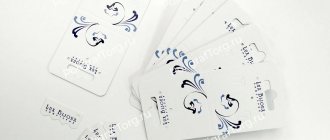Jewelry products have their own specifics in the field of mandatory labeling . to such a product , and applying an identification code directly to the product requires special equipment.
In an article prepared by klerk.ru, experts will talk about which jewelry items are subject to mandatory labeling , what equipment will be needed when working with this group of goods , and what deadline market participants need to prepare for.
Dates for introducing jewelry labeling
The government planned to make labeling of jewelry mandatory 2021 . It was assumed that from January 1 there would be a ban on the import and production of jewelry without the possibility of identification. And they wanted to ban the sale of unlabeled products from July 1. However, representatives of small businesses did not have time to prepare and the deadline was changed.
On March 1, 2021, marking of jewelry was launched . Companies could take part in the experiment voluntarily. It was enough to register in the GIIS DMDK and register for special registration with the Federal Assay Office (https://probpalata.ru/specialAccounting).
On April 1 , 2021, market participants were allowed to try out technological solutions for applying identifying marks directly to products .
From March 1, 2022, labeling of jewelry will become mandatory and will take place in the planned two stages. The presence of DataMatrix code will become mandatory for imports and manufacturers. Participants in the turnover will enter all transactions carried out with jewelry into the GIIS DMDK system, namely:
- put products into circulation;
- transfer ownership rights;
- send and move goods to warehouses or points of sale;
- remove products from circulation after sale to the final consumer.
From March 1, 2023, the import and sale of jewelry without a physical mark will be prohibited, but storing unmarked products in a warehouse will be permissible.
From March 1, 2024, it will be prohibited to sell and store jewelry without identification marks.
other information
The passport contains the price of the product in rubles (RUB), the quality control stamp, and the date of manufacture. The data can be either printed or written manually.
Starting from 2021, Russia plans to introduce mandatory labeling of jewelry: a special barcode will be applied to the tag. If the law goes into effect, shoppers will be able to download a smartphone app and scan any tag. After this, all the necessary information will be displayed on the screen.
Video
How does jewelry labeling work in 2021?
With the help of mandatory labeling, you can track the entire path of products from the manufacturer to the end consumer. A special identification code allows you to obtain information about the movement of jewelry goods in several stages.
For jewelry, marking code is provided not by the Center for the Development of Advanced Technologies, but by Goznak. Accordingly, participants in turnover use the GIIS DMDK system (https://dmdk.ru/) instead of “ Honest ZNAK ”.
The procedure for working with marked goods is as follows:
- suppliers and importers order markings from Goznak;
- the provided identification codes are applied to jewelry and special tags;
- participants in turnover register warehouse movements and transfer of property rights in the GIIS DMDK ;
- When selling to the final buyer, the seller scans the code at the checkout. After this operation, the product and identification code go out of circulation.
These measures will eliminate the sale of counterfeit and low-quality goods and fair among entrepreneurs .
How to read a jewelry tag and what does it tell you?
Description The main document that confirms the authenticity of a piece of jewelry is a tag or certificate of quality, as well as the hallmarks on the product. But now let's talk about the tag - what should be included in it and what data should be indicated.
Remember! The tag is made of thick paper, like cardboard, or some kind of film; it must be neat, without visible damage, stains, or tears.
On the tag itself, a conscientious manufacturer prescribes a number of characteristics of the jewelry in accordance with the norms of the law on Gosstandart standards in sulfur retail trade. These include:
1. The name and trade logo of the manufacturer, and if it is an individual, the abbreviation FOP and his address are put on it.
2. The name of the product itself and the article.
3. The sample of the precious alloy and the weight of the jewelry itself in grams are prescribed.
4. The size of the product itself is indicated on the tag in millimeters.
5. Data about the insert is also written down - natural/artificial stone, its weight. In particular, if the stone is artificial, the weight is indicated in grams, natural - in carats.
Important! It is mandatory that the tag itself must contain a clearly visible quality control code from the manufacturer, as well as the date of manufacture of the product itself in the format - date, month, year. The label must also include an inscription about DSTU, confirming compliance with state quality standards.
Contents A separate point worth highlighting is how to correctly read the tag on a piece of jewelry with precious stones. Therefore, next we will examine the question of how to read a tag with diamonds and diamonds.
First of all, it is worth noting that according to the rules of jewelry craftsmanship, diamonds can be called diamonds in a product if the latter, after its cutting, has 17, 33 or 57 facets. And the whole point is that only such a number of facets, according to the rules of jewelers, can convey all the beauty and play of light in the stone. Among other things, the shape of the stone is also prescribed - it can be a circle or an oval, a square or a marquise, a princess, and so on.
Another point worth paying attention to is the existing difference between such concepts as carat and karat. It would seem that there is no difference, but it is huge for those who understand stones - although they have the same translation into Russian, they have different meanings:
carat – unit of stone weight equal to 0.2 grams; if it is karat, we are talking about an alloy of gold. For example, 24 carats is 999 gold, and so on.
Remember! If the design itself or the design of the jewelry does not allow attaching a tag to it, it should be placed in a separate bag and always together with the jewelry.
The taming tag, inlaid with a stone insert, will contain the following items:
the very first digit in it, for example, 2 or 5, is directly the number of inserts with similar characteristics; Next comes the name of the stone and the type of its jewelry cut, indicating the number of facets; the weight of the stone is indicated, as well as its color class from 1 to 9 - the purer the stone, the lower the number; the class of stones is also prescribed, or rather their purity - from 1 to 12, when the defect is invisible, or can be seen even without a magnifying glass; The cut grade is also indicated. Remember! If we talk about certificates issued for stones, they are assigned only to those that weigh 0.3 carats or more. All these characteristics and indicators on the tag will help you correctly read what the manufacturer prescribed.
source
Which jewelry items are subject to labeling?
Gold , precious stones should be marked , namely:
- gold and platinum jewelry ;
- gold coins ;
- cut and rough diamonds;
- diamonds, sapphires, emeralds and rubies;
- platinum and palladium powder.
Silver and silver goods , as well as products whose weight does not exceed three grams, are exempt from mandatory marking
What is GIIS DMDK and how does it work
GIIS DMDK is a state information system (GIS) that controls the circulation of precious metals and precious stones and jewelry . Participants in this market interact in GIS with each other and with government regulatory authorities.
GIIS DMDK contains information about jewelry , their description and identification codes. If necessary, the system can generate a statistical or reference report or obtain a reconciliation report upon request.
To interact, you need to register in your personal account at GIIS DMDK . rule and user manual can be viewed on the official website of the system in the “How to connect” section (https://dmdk.ru/connect/).
What you need to work with jewelry labeling in 2021
The process of preparing work with marking consists of several steps:
- Purchase of an electronic digital signature ( EDS) with an enhanced qualified security key certificate.
- Ordering and receiving a certificate of no debt from the tax service.
- Registration of a personal account on the GIIS DMDK website.
- Preparing the necessary equipment:
- cash registers with software adapted for labeling ;
- scanners for reading marking codes;
- printer for printing labels.
- Joining the Association of Automatic Identification UNISKAN/GS1 RUS.
- Conclusion of an agreement with Goznak for the provision of DataMatrix codes.
Labeling work at different stages of circulation
Participants in the jewelry and precious metals market perform various actions with markings characteristic of the type of activity of the enterprise.
Let's take a closer look at each of them.
Mining companies:
- form production batches;
- send a request to Goznak, receive codes and label each package;
- labeled raw materials are shipped.
Raw materials are shipped to refineries , enterprises with which a toll agreement has been concluded, or to product . In the latter case, property rights are transferred.
Manufacturers:
- receive finished raw materials;
- create blanks for the production of jewelry ;
- send them to the Federal Assay Office (FAP) to identify compliance;
- produce jewelry ;
- send finished goods to the FPP for approval;
- order markings and apply them to labels.
When registering a product in GIIS DMDK, they provide information about the batch of raw materials from which the product .
Jewelry processors and manufacturers :
- receive the marked goods;
- manufacture products in compliance with requirements;
- send it to identify correspondence in the FPP;
- order labeling for each unit of goods;
- place markings on tags and packages.
Refineries : _
- purify precious metal from impurities;
- The received products are sent to the owner.
The owner confirms the fact of practical receipt in the GIIS DMDK.
Wholesale customers:
- register the fact of receipt of products ;
- distribute goods to retail outlets.
Retail Stores:
- accept finished labeled products into the jewelry store;
- record the transfer of ownership rights in the GIS;
- remove the product from circulation by scanning the markings at the checkout when selling to the end consumer.
The online cash register sends information about the sale to the fiscal data operator. From there, the data is transferred to the information system for accounting for precious metals and stones .
Pawnshops
Submit an application to receive DataMatrix codes and, upon receipt, mark the products .
Gemstone indices
According to the rules, each stone must have its own index, which is indicated on the tag. The table below shows a list with symbols.
| Index number | Name of the stone |
| 01 | Diamond edge |
| 02 | cubic zirconia |
| 03 | Diamond |
| 10 | Amethyst |
| 20 | Ruby |
| 30 | Pomegranate |
| 40 | Emerald |
| 50 | Sapphire |
Most stones are not described in detail. As a rule, detailed information is indicated on tags with diamonds and emeralds, since they are considered the most expensive. Moreover, in every store the buyer of such jewelry is required to issue a passport for it. But it’s not enough just to receive a document; you also need to understand what all the abbreviations it contains mean.
We recommend reading: What are precious metals and what is their value?
| Organ name | Designation | Processing quality | Meaning |
| Round | Kr | Excellent | E (Excellent) |
| Pear | G | Very good | VG (Very Good) |
| Square | Kv | good | G (Good) |
| Marquis | M | Average | F (Fair) |
| Emerald | AND | Below the average | P (Poor) |
| Baguette | Bt | ||
| Princess | P | ||
| Triangle | T |
It is noteworthy that in Russia it is customary to mark a cut group with Russian capital letters “A”, “B”, “V”, where “A” is the highest grade. Diamonds have such a parameter as the purity of the stone, which in the Russian market is usually designated by numbers. The rating scale starts from 1 (this is considered the purest mineral) and goes up to 12. Particular attention is paid to color, with a numerical range from 1 to 4 for small specimens and a numerical range from 1 to 17 for large minerals (in both cases, the lower the number, the purer the diamond). But with emeralds it’s a little different because of the shade: if the number is 1, it means the color is dark.
To make it clear how to read the marking, we suggest looking at this option: 3 Kr 15-0, 03-1 ½ A. The explanation is as follows: the product contains three round diamonds with 15 facets, each weighing 0.3 carats . The gemstones are pure in color with minimal inclusions and cut to the highest quality.
How to mark jewelry
Two hallmarks are applied to jewelry The first is fineness, which means the amount of base noble metal content. The second is a print with encoded information about the manufacturer, the date of manufacture of the product and the territorial inspection to which the manufacturer belongs.
On March 1 , 2022, jewelry products will be marked with an additional tag with a Data Matrix code and identification number.
And from March 1, 2023, the Data Matrix code will look like a nanotag. The new imprint will be placed on each individual piece and precious insert of the jewelry and will not be visible to the buyer. The size of such a mark will be 0.8 mm2. Entrepreneurs are freed from purchasing expensive equipment. Responsibility for applying nanoengraving rests with the FPP. The department will put marks on jewelry along with the hallmark.
Jewelry Tags
What should they look like? What information should you have?
When we enter a jewelry salon or store, we always carefully and meticulously examine the display cases with beautiful jewelry. There are a lot of them, and exactly the same number of cardboard or plastic rectangles attached to the decorations. We are talking about jewelry tags . In this article I would like to talk in more detail about jewelry tags , why they are needed and what information they should contain.
Jewelry tags are a must-have item for selling jewelry. On the territory of the Russian Federation, the presence of tags on jewelry is required by the “Rules for the sale of certain types of goods,” which are approved by Decree of the Government of the Russian Federation N55 in accordance with the Law “On the Protection of Consumer Rights.”
Therefore, if you have ever bought something in a jewelry store at least once in your life, you have definitely encountered jewelry tags . They are usually miniature, can be of different colors, but at the same time, extremely informative, containing an account of the jewelry to which they were attached.
Quality assurance
Jewelry tags and any other tags in general are designed for the effective organization of identification, as well as high-quality accounting of a large number of products being sold, with the instant possibility of obtaining the necessary information about each product separately. In addition to marking functions, tags also perform sealing and warranty functions.
The fact is that, in accordance with the law, all tags on jewelry must be attached exclusively with special seals, onto which the manufacturer applies its imprint. This will protect both the jewelry itself and the jewelry tags from counterfeiting during the sales process.
Therefore, when purchasing products, only sealed jewelry tags provide a 100% guarantee of compliance of the purchased jewelry with the characteristics declared by the manufacturer.
It is also very important to know that only the jewelry tag is the official certificate of the manufacturer for the products it produces. If the seller of a jewelry store, instead of a jewelry tag, shows you some other accompanying documents and certificates, then you should be careful, since the matter here is “unclean”, because such documents are not endowed with any legal force.
Information on the tag
Before purchasing jewelry, you need to know what information should be included on jewelry tags. According to the law, a jewelry tag must have the following information :
Logo, name and address of the manufacturer
Name of the jewelry and its article number
The name of the precious metal used and its sample
Weight of the product in grams and its size
The price for one gram and the price of the entire jewelry
Information about gemstone inserts, which is usually located on the back of the jewelry tag
Date of manufacture of the product
Quality Control Department stamp
The front side of the jewelry tag must have a hologram of the manufacturer.
Very often, trading enterprises carry out an additional check of the weight of the jewelry they sell to ensure compliance with the weight indicated on the jewelry tags of the manufacturer. In such cases, jewelry tags of the trading enterprises themselves can be additionally attached to the products.
Making jewelry tags
Jewelry tags are made from thick types of paper, cardboard, thermal paper and various types of film, such as polypropylene, polyethylene, polyester, polyvinyl chloride and polystyrene. Today, the most popular materials for making jewelry tags are film synthetic materials, because such tags have increased strength and wear resistance, and of course retain their appearance longer.
In the end, I want to talk about the method of applying information to jewelry tags , which is often determined by the scale of production of the manufacturer. In small factories, information on jewelry tags is often applied by hand.
Information is applied using either a ballpoint pen or a rubber stamp, while large manufacturers of precious metal products use thermal transfer or flexographic printing in the production of tags, which is suitable for jewelry tags made from thermal paper. That’s all for now on this issue, I hope that this information will help you and will not give you the opportunity to make a mistake when purchasing the jewelry you have chosen.
Deadlines for marking leftover jewelry
Precious metals market participants will carry out operations to mark the remaining jewelry as follows:
- Until January 15, 2022, the balances of jewelry products as of January 1, 2022 will be entered into
- By April 1 , 2022, they will conduct an inventory count and update information on balances as of March 31, 21.
- By September 1, 2022, label all declared balances.
From March 1, 2023, the sale of jewelry without nanomarks will be prohibited. And with
On March 1, 2024, the remainder without appropriate marking will be prohibited from being stored in warehouses.











